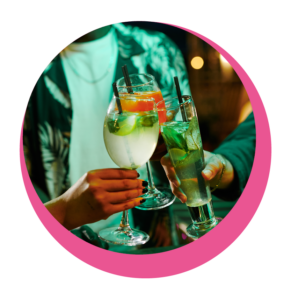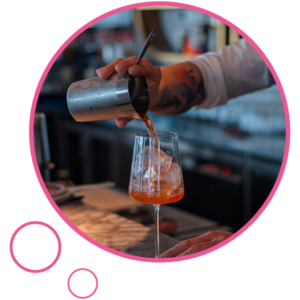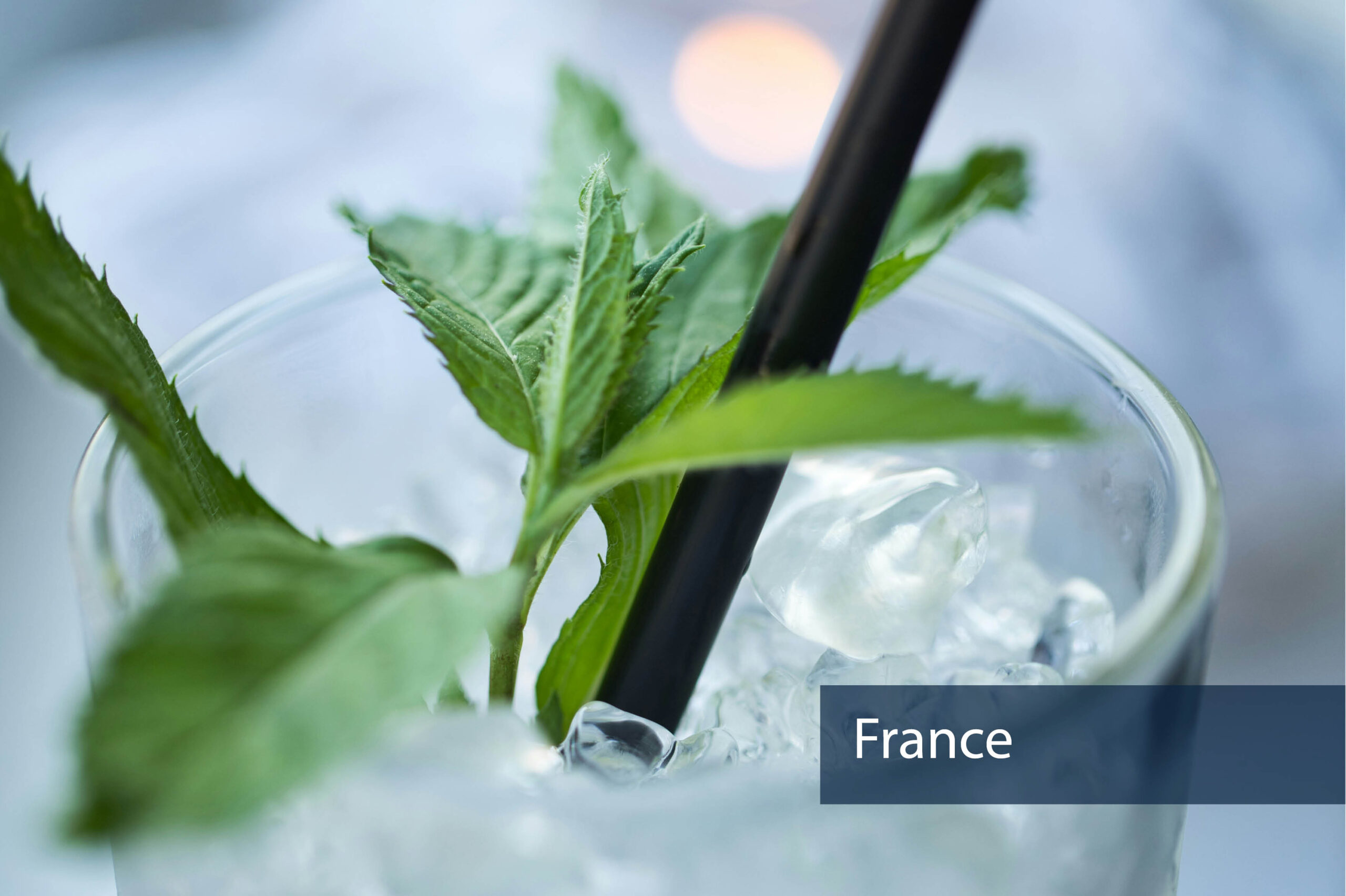
Julien Veyron, Client Solutions Director France for CGA by NielsenIQ draws on CGA’s OPUS data to delve into the ways in which France’s no and low alcohol brands can capitalise on the category’s popularity among consumers, identifying potential areas for future growth within this market.
According to the latest data from CGA by NielsenIQ’s OPUS research, which examines consumer habits, drivers, preferences, and expectations by channel and occasion, France’s no and low alcohol On Premise market reached its zenith in September 2022. By that time, 19% of On Premise users were consuming it, marking a notable increase from the 12% recorded in March of the same year, only to drop down to 11% last Autumn. Despite the overall decrease in consumption since that period, there is a noteworthy shift in the engagement frequency of this category’s drinkers. Currently, 49% of them choose no and low alternatives every or almost every time they visit the On Trade. Interestingly, this contrasts with the peak consumption period in September 2022, where frequency hit its lowest point at 43% during the surveyed period.
Selecting no and low drinks
For Franch drinkers, the decision to engage with the no and low alcohol category is heavily influenced by individual preferences and personal motivations. The primary reason, chosen by 25% of consumers, is because they are driving. However, a significant portion – nearly a fifth of consumers – embrace no and low alternatives either to pursue a healthier lifestyle or simply because they prefer soft drinks, a finding that underscores the importance for brands to cater to the health-conscious consumer category.
Beyond the conventional motivations of simply being healthier or avoiding alcohol, brands and operators can capture this audience by focusing on options that also deliver a superior drinking experience, as 18% of French On Premise users claim that they engage with the category because they genuinely enjoy the taste of the drinks.
In the face of ongoing inflationary challenges, nearly 30% of French drinkers also prioritise good value for money, but brand or product quality still remains a top priority for a fifth of consumers. Specifically, the data also indicates that when drinkers aim to strike a balance between affordability and quality, better flavours take centre stage as the primary factor in boosting engagement with no and low options: when asked about elements encouraging more frequent consumption of no and low alcohol cocktails, almost one out of four expressed a strong desire for an agreeable flavour profile.
In essence, price consciousness does not necessarily equate to a preference for cheap options, with quality and flavour ranking high on consumers’ priorities, so brands and operators should focus on offering products that provide a satisfactory drinking experience at a price point people deem reasonable.
A growing brand presence
Beyond price and flavour, brand-related considerations have gained influence on consumer habits. Factors such as the brand’s reputation and the ingredients used have become increasingly important, mentioned by 13% of respondents in our surveys. Now however, its backstory, heritage, whether the liquid is made by a brand known for other products, and visual details like label design, also play a more crucial role in people’s decision-making process. On the other hand, the actual alcohol content of the product remains important for some On-Premise consumers, but noticed that its significance has decreased since March of the previous year, dropping from 20% to 16%.
ingredients used have become increasingly important, mentioned by 13% of respondents in our surveys. Now however, its backstory, heritage, whether the liquid is made by a brand known for other products, and visual details like label design, also play a more crucial role in people’s decision-making process. On the other hand, the actual alcohol content of the product remains important for some On-Premise consumers, but noticed that its significance has decreased since March of the previous year, dropping from 20% to 16%.
The brand’s growing importance in people’s decision-making is evident in the notable increase in the number of drinkers specifying the brand name when ordering. In March 2022, nearly two-thirds of consumers chose an unspecified no and low alcohol option, compared to only 41% who looked for a brand. But OPUS indicates a more balanced landscape, with the former down to 53% and the latter up to 47%.
This shift marks a significant change in the French market, reflecting a more sophisticated consumer engagement with the category, which is now less occasional and more involved. This means that brands have a unique opportunity to establish themselves strongly within the category, build a robust reputation and foster consumer loyalty to reap rewards in the future as the market becomes increasingly crowded.
France vs the world
The promising outlook for the no and low alcohol category in France mirrors trends in the broader global market. According to CGA’s REACH research, which provides insights from On Premise consumers across 34 key markets worldwide, approximately 16% of On Premise drinkers globally opt for no and low alcohol alternatives. This already identifies a substantial opportunity for the no and low category, but the potential extends beyond straightforward serves.
Both brands and operators can find more opportunities in the cocktails space, which has become a prominent category across the globe, with around 28% of On Premise visitors engaging with it. And when considering the consumption of a spirit with a mixer, this percentage spikes to nearly half of On Premise users worldwide. This dynamic presents a vast opportunity for no and low alcohol brands, especially those positioning themselves as spirit alternatives, simple fizzy mixers, or herbal no-alcohol liquors specifically designed for blending.
As in France, the global surge in popularity of no and low alcohol options is undeniably linked to the increasing consumer interest in adopting healthier lifestyles. This inclination is reflected in their approach to mixed drinks as well, with a significant 29% of cocktail consumers expressing that the health aspect of their drink has become more important than it was 12 months ago, surpassing the average consumer sentiment by 3pp.
A substantial two-thirds of Global On Premise users have plans to reduce their alcohol intake over the next 12 months, indicating a noteworthy 3pp increase compared to the average drinker, and so brands and operators should closely examine this space to fully tap into the potential of this market.
 On a global scale, the landscape for lower abv drinks is still evolving. Currently, 39% of On Premise users worldwide consume them regularly, while 37% have experimented with them in the past, 14% express openness to trying them and a modest 11% have not tried them but express disinterest in doing so. Currently, only a minority of those who have tried lower alcohol alternatives are opting for no and low cocktails, which poses yet another significant untapped opportunity for suppliers in the lower abv space. In contrast to the global landscape, the no and low alcohol category in France appears to be at a later stage into its development.
On a global scale, the landscape for lower abv drinks is still evolving. Currently, 39% of On Premise users worldwide consume them regularly, while 37% have experimented with them in the past, 14% express openness to trying them and a modest 11% have not tried them but express disinterest in doing so. Currently, only a minority of those who have tried lower alcohol alternatives are opting for no and low cocktails, which poses yet another significant untapped opportunity for suppliers in the lower abv space. In contrast to the global landscape, the no and low alcohol category in France appears to be at a later stage into its development.
While CGA’s latest data shows a certain decline in the no and low-alcohol category post positive success in 2022, the broader global trajectory and its connection to the popular cocktail space paint a favourable picture for the future. As the category continues to offer a viable opportunity to profit from as it moves towards maturity, it will be crucial for brands and operators to integrate current insights into strategic planning to navigate the nuances of the French market successfully and continually meet the changing preferences of consumers.

CGA’s OPUS research provides a rich resource of data and insights that helps manufacturers, suppliers and operators answer category, channel, occasion, and brand questions, and optimise sales and marketing strategies across the On Premise sector in a variety of markets, including France. To learn more about CGA’s capabilities across the French On Premise, email Julien Veyron – Client Solutions Director, France at julien.veyron@nielseniq.com.





